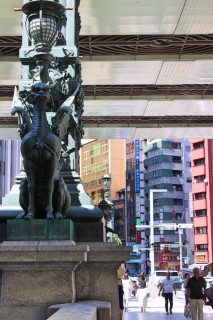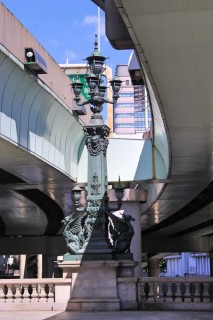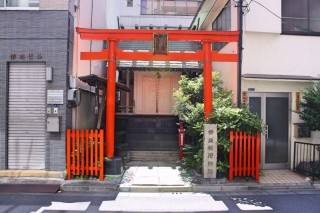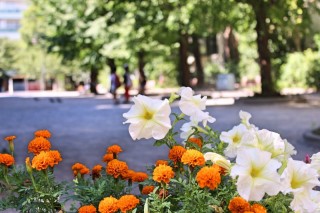Loading
Search
▼ Nihonbashi and Memories of Edo Era
- Category:Experience

JAPAN TRAVEL
Visit Nohonbashi and transport yourself back to Edo era
Nihonbashi literally means Japan Bridge. It connects the banks of the Nihonbashi River since the 17th century. The Nihonbashi district was an important trade center during the Edo period. The area surrounding the bridge was burned to the ground during the heavy bombing of Tokyo in 1945. A part of the bridge still wears scars from bombs. It is one of the few traces left from the air raid that destroyed most of Tokyo.
To find all necessary information about this historical district, it is best to visit the Nihonbashi Information Center located next to Mitsukoshimae Station. Information is available in English, French, Italian, Russian, Ukrainian, Egyptian Arabic, Chinese. They also offer a number of tours and activities connected with Japanese tradition, which you can check out here. The center holds seasonally themed workshops and they have their own souvenir shop and cafe.
This summer 2016, Nihombashi offers many special attractions which are part of the Eco Edo Project. ART AQUARIUM shines the spotlight on goldfish, a traditional symbol of summer in Nihonbashi since the Edo Period. There is a free Goldfish Trolleybus running on Saturdays, Sundays, and holidays between 23rd of July and 28th of August from 11:00am till 5:00pm. It stops at COREDO Muromachi, Nihonbashi Mitsukoshi-mae, Nihombashi Takashimaya-mae and Hamacho Meijiza-mae. As a part of the project there are also lines of lanterns hung from 7th of July till 15th of September along Naka-dori Street (between COREDO 1 and 2) and COREDO Nihonbashi entrance.
To fully immerse yourself in these events, you can rent a yukata. It is available every Saturday between 9th of July and 24th of September and every Sunday between 24th of July and 28th of September. The place providing yukatas for rent is located in Kyoraku-tei (COREDO Muromachi 3, 3F) and costs from ¥3,000 to ¥5,500 (tax included). Advance reservations are required. For more information you should contact Nihonbashi Information Office.
To see a different side of Nihonbashi, it is a great idea to take a boat ride along the Nihonbashi river. There are few companies offering cruises. You can book a private cruise in a first-class limousine boat or enjoy the night sky on a 60 minute cruise that includes the Rainbow Bridge, Tokyo Tower, Tokyo Sky Tree, and a stunning view of the city lights on the evening cruise. There is also an 80 minute cruise from the Nihonbashi River to the Kanda River on the Kawasemi Waterbus.
One more charming thing about Nihonbashi is its mix of traditional European architecture, modern commercial complexes and numerous shops that date back to as far as 300 years ago. There are many old temples too and a few museums. The most popular are the Currency Museum, Kite Museum and Mitsui Memorial Museum which displays the Mitsui family's collection of fine arts and crafts collected since the family's origins in the early Edo period.
One more charming thing about Nihonbashi is its mix of traditional European architecture, modern commercial complexes and numerous shops that date back to as far as 300 years ago. There are many old temples too and a few museums. The most popular are the Currency Museum, Kite Museum and Mitsui Memorial Museum which displays the Mitsui family's collection of fine arts and crafts collected since the family's origins in the early Edo period.
Nihonbashi may not be a first tourist choice, but it is an important part of Tokyo. It definitely helps to discover Japanese history.
- September 10, 2016
- Comment (0)
- Trackback(0)






